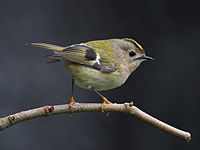
Photo from wikipedia
We investigated the effects on humans, in terms of skin conductance levels (SCLs) and positive and negative affect schedule (PANAS) scores, of plant communities that differed in their vegetation structure… Click to show full abstract
We investigated the effects on humans, in terms of skin conductance levels (SCLs) and positive and negative affect schedule (PANAS) scores, of plant communities that differed in their vegetation structure (single-layer woodland, tree-shrub-grass composite woodland, tree-grass composite woodland, and single-layer grassland) through two perceptual methods: onsite surveying and photo elicitation. The results showed that (1) the choice of perception method significantly impacted the PANAS scores of the participants but had no influence on the SCL and (2) viewing a single-layer grassland reduced the SCL (representing the physiological stress level) and improved the positive affect score. The recovery effects for the four vegetation communities were ranked in the order of single-layer grassland > tree-shrub-grass composite woodland > single-layer woodland > tree-grass composite woodland. (3) Gender and professional background significantly impacted the plant community perception methods and landscape experience, and negative affect scores were lower for male participants than for female participants. Participants without backgrounds in landscape design exhibited higher positive affect scores under photo elicitation. Based on the conclusions drawn above, the onsite survey is preferable between the two perception methods. It is recommended that in future landscape designs, combinations of plant community types should be reasonably matched through onsite perception. These research results can provide a scientific basis for the future design of landscapes based on perception experience.
Journal Title: International Journal of Environmental Research and Public Health
Year Published: 2022
Link to full text (if available)
Share on Social Media: Sign Up to like & get
recommendations!